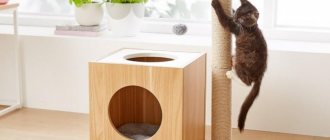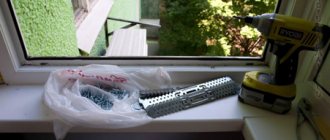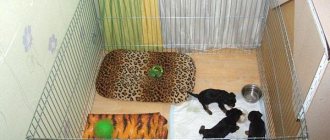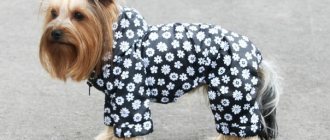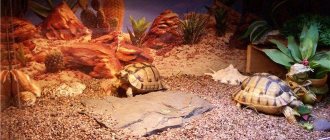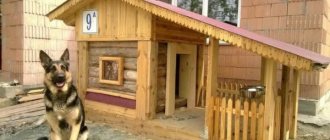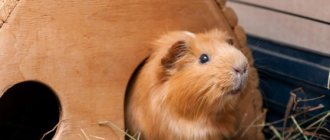Why an aviary in an apartment?
An apartment aviary is not a necessary device for keeping dogs, but it is very useful. Most owners allocate a corner for their pet where they lay a rug. However, you can provide greater comfort for your pet by building an enclosed space.
Building an aviary in an apartment will help solve several issues:
- Will protect the little puppy from troubles that he can get into while exploring the world around him.
- Helps train your pet to use the toilet and a bowl of food.
- Protects things in the apartment from the claws and teeth of pets.
- It will be a great place for a mother to spend time with her cubs.
- Will protect the puppy from contact with other pets or the obsessive attention of small children.
- It will allow you to leave your dog unattended for some time without fear for its health or the condition of the apartment.
- Will provide the opportunity to isolate an animal if there is a suspicion that it is sick and needs to be quarantined.
- Will protect your guests from the protection of a reliable guard.
Most often, enclosures are made for small breeds of dogs and puppies. They can be purchased ready-made at pet stores (metal, tent-shaped, folding) or built with your own hands. Depending on the size of the four-legged animal and its activity, you should select an open or closed type with a lid.
Did you know? The smallest dog in the world is considered to be a representative of the Chihuahua breed, Millie.
Her height at the withers reaches 9 cm. At two years old, her weight was 0.4 kg.
How to build a dog enclosure with your own hands
You can order a folding cage or spare parts for a stationary one on the Internet, or buy it at a hardware store or pet store. The average price for finished closed-type structures (street) is 10,000-80,000 rubles. Depending on additional elements and improvements, the price will vary.
But, with some materials, a talent for construction and competent drawings, you can independently build a cozy enclosure for a dog of any size. This option is not always fast and beautiful, but it is profitable and reliable.
It is not recommended to develop a complex design or use decorative elements (especially forged ones), as they can cause frequent injuries. Simplicity of design and ease of use are important. You can’t skimp on materials either. It is better not to use plastic or nails for outdoor cages (replace with screws and self-tapping screws). For permanent permanent housing, the foundation is being prepared. In addition, special attention is paid to the roof: it must be made sloping in the opposite direction from the exit so that precipitation can drain off.
Another criterion is a transparent wall. It is made from mesh or rods. The second option is always preferable, especially for large dogs. Iron rods are installed every 5-10 cm. Paws (claws) and muzzles (fangs) often get stuck in twists and nets.
Useful article: “Dangers of cold weather - signs, symptoms, prevention of colds in dogs.”
Required Tools
Depending on the type of enclosure, various materials and tools will be needed for construction:
- Shovel, hammer;
- Welding machine (if the frame is metal);
- Saw;
- Hammer, screwdriver, drill;
- Pliers (for bending gratings);
- Sandpaper (for wood processing);
- Containers for mortar and cement mixing (for foundations).
Aviary for a small dog
Playpens for small dogs are often apartment options; decorative breeds are not suitable for outdoor living. Therefore, it is easier to buy a small plastic enclosure. If you decide to build houses yourself, you need to arm yourself with:
- Wire;
- Pliers;
- A frame or elements for it made of the selected material;
- Door awnings, locks and latches.
For the tent version you will need thick fabric, threads, and Velcro. If metal rods are used as a base, then a welding machine is needed. For wood you will need a screwdriver with screws and a drill.
Selection of material and size calculation
The lightest and simplest frame is built from plastic pipes. This design is easy to fold and carry, but is not suitable for regular long-term maintenance. This type of material is good for a temporary playpen for puppies or as a territory boundary in specific situations. It is better to cover the enclosure with fabric curtains.
The second option is metal. They create a completely metal frame or in combination with wooden beams. You can use mesh or iron rods for transparent walls and doors. Often the enclosure is integrated into the furniture, using a cabinet, the bottom shelf of a wardrobe or a cabinet as the frame. Then the base of the enclosure is wood, and the front wall is built from available materials.
A home enclosure does not imply large-scale dimensions. The height is no less than the height of the animal at the withers. Small dogs are given playpens without a roof, then the walls must be of such a height that the pet cannot overcome them.
Drawings and photos
Step-by-step manufacturing instructions
The simplest option for a strong home enclosure is a wooden frame with metal inserts. First of all, prepare the base - a parallelepiped:
- Floor - according to area measurements (a rectangular section is knocked out of wooden boards, or hard plywood is used), it is better to nail 2-4 long bars to the bottom as legs;
- Flat boards (4-5 cm wide) are nailed to the sides of the finished floor (on the long part of the rectangle - 3 boards, on the short part - 2), it is important that the bars fit tightly at the corners;
- Metal rods with a diameter of 0.5-1.5 cm are driven between the boards or a solid mesh is attached; you can divide the height into 2 parts: cover half with whole plywood, and leave a “window” on top;
- A door is cut out of a single piece of wooden board so that it fits tightly across the width between the boards;
- A place for a window from mesh or rods is also cut out in it;
- The hinges are attached so that the door opens outward;
- The roof is made at will, by analogy with the floor (several flat boards or a whole flat beam);
- The bottom is covered with a lounger, holders for bowls are attached;
- It is better to varnish the frame.
Video tutorial for making a small indoor aviary
Aviary for a medium breed dog
Depending on the place of residence of the animal, materials and construction scheme are selected. For apartment-kept dogs, an enclosure of the previous type (as for small pets), with adjusted dimensions, is suitable. Of course, a plastic frame and a building without a floor and roof will not suit an active medium-sized dog. If your pet is kept outdoors, he needs a spacious enclosure of a closed or stationary type with 3 blank walls and one transparent one.
Selection of material and size calculation
A wooden frame is ideal for an outdoor enclosure. A simple design - a parallelepiped with a sloping roof and a small kennel inside. Of course, you can build an enclosure with two open walls or a completely unprotected dwelling, but with an insulated, equipped booth . An option for a permanent stationary enclosure is a stone house with a foundation.
Depending on the breed, the size of the cage varies. Some small dogs do not need to move much; 5-6 sq.m. is enough (excluding kennel). Laikas will need a large space, it is better to organize several zones for them, open ground is prohibited. Spitz are characterized by a craving for freedom, they make tunnels. Height – 1-1.2 m minimum.
Drawings and photos
Step-by-step manufacturing instructions
There is a small enclosure based on the principle of a box. The floor is made: 2 long wooden beams are installed in parallel, long dense boards are placed on them, attached with screws or bolts so that the dog is not injured by nails. The floor must be leveled and varnished. A frame is installed around the perimeter. The boards are nailed at the corners of the floor and in the middle of the long back wall.
The next step is building walls . Whole square boards and lining are used. First, they are impregnated with drying oil and secured with screws to the vertical frame. Install 3 blank walls. A clapboard is attached on top to protect from the wind. In the last stage, the structure must be varnished.
The outer open wall is made up of individual rods or a ready-made lattice; the use of a mesh is not recommended. Next, the internal kennel is installed or a ready-made one is installed. It should be located in the deepest corner of the enclosure.
For the roof, a sloping wooden frame is assembled from bars, longitudinal boards are attached, and covered with insulating insulation. The top layer is roofing material; you can use varnished wood, slate, or corrugated board. It is important that the tilt is in the opposite direction from the door.
the door in the lattice part, purchase a ready-made one and hang it on the hinges. The last step is to set up bowls, place the bed in the kennel, and possibly insulate the walls for the winter.
Video tutorial on making an enclosure for a medium-sized breed
Aviary for a large breed dog
For permanent residence, a large animal needs a spacious and multifunctional enclosure with a winter road, an open area and a small platform where bowls and a summer bed are installed. In this case, only a fundamental approach and permanent construction using several types of materials are needed.
Selection of material and size calculation
To build a house for a large pet, you will have to spend money on several types of materials. Firstly, you will need cement to pour the foundation, and secondly, wood for the walls of the winter road and the frame of the platform. Often, breeders save money and choose ready-made mesh instead of individual iron rods. It's cheaper, but dangerous for the dog, who could get caught and get hurt.
The choice of brick walls and stone floors is not the best. This material is cold and does not warm well. Metal sheets should not be used; they heat up too quickly, and in winter they freeze and draw out heat.
Big animals need a big house. When space is limited, the pet can become aggressive, uncommunicative, and withdrawn. Therefore, the enclosure must be at least 4 meters long and 2.5-3 meters wide. The dimensions of an adult dog are taken into account: height at the withers and body length. It is better to choose a height equal to the height of the owner.
Drawings and photos
Step-by-step manufacturing instructions
General plan for building a multifunctional enclosure:
- Construction of the lower part: pouring the foundation according to the full size of the future cage (taking into account the platform and winter road, you can leave a section of soil); a mortar screed of 40-60 mm with a slight slope is poured. The floor for the platform or flooring is half of the enclosure - a frame made of timber and a flooring made of polished boards screwed in with screws.
- A frame for the winter road is installed from boards or wooden piles. A blank wooden wall is being built around the perimeter of the deck, 4 walls of the winter road. Can be insulated with ecowool. The resulting structure is covered with a sloping roof.
- The remaining part of the enclosure is covered with a metal frame made of horizontal and vertical rods. A metal door with a latch is attached. It is better to weld grooves for a padlock.
- The wood must be sanded and varnished.
Video tutorial for making a large enclosure
What can it be made from?
The aviary can be made from various materials. The main thing is that they are durable and safe.
Find out what you can use to make an outdoor dog enclosure.
Most often used for barriers:
- metal mesh;
- wooden planks;
- plastic.
Also used are plywood, chipboard, boards, PVC pipes, fabric and other materials.
Aviaries can be made in the form of:
- square;
- circle;
- rectangle;
- polygon.
Most often, enclosures are made rectangular, since they allow them to fit into almost any corner and save space in the apartment. If the apartment area allows, then preference is given to a polygonal fence.
Depending on the size and activity of the dog, enclosures are made closed on all sides or open at the top.
How to calculate the required sizes
The dimensions of the fence will need to be calculated depending on the size of the animal. So, for a puppy and a representative of a small breed, it must be at least 0.4 m high and 0.5 square meters in area. m. For medium and large breeds - much more.
The height should be calculated based on the height of the animal so that it can freely stand on its hind legs. The area should be such that the dog can move around in the fence, and not just be in a lying position.
How to make it yourself
The most common options for do-it-yourself enclosures are made of metal and wood. We invite you to read simple instructions on how to make them.
It will be useful for you to learn how to care for a dog’s visual organs, how to properly care for a dog during a walk, how to motivate a dog with treats, at what age do puppies get their first vaccination, how to stop a dog from howling in the absence of its owners, what cereals can be used to cook a dog’s porridge, what included in the general dog training course.
Made from metal mesh
For this option you will need the following tools and materials:
- metal mesh (preferably not chain-link);
- metal rods (for small species you can also use wooden beams);
- wire (welding machine);
- pliers;
- door hinges.
The step-by-step process for making a metal enclosure is as follows:
- From rods we make a structure of the desired shape. The simplest and most common option is a parallelepiped.
- We stretch the mesh over the frame, leaving one wall free.
- In the corners, we connect the mesh with the rods with wire or weld it.
- We place the free wall on the door hinges.
- We attach the latch.
- The floor is covered with plywood and thick fabric.
Important! It is necessary to carefully check that there are no sharp parts, protruding remnants of wire, etc. in the enclosure, that is, anything that could injure the pet.
Made of wood
To build a wooden enclosure you will need:
- planks and slats made of wood;
- file;
- roulette;
- screwdriver;
- self-tapping screws;
- door hinges.
The process of installing a wooden fence consists of the following stages:
- We measure the required length of the slats and shorten them according to the size.
- We knock together a quadrangular frame from the planks using self-tapping screws.
- We measure the required height of the planks and nail them along the entire perimeter of the frame. The distance between the slats should be such that the animal’s head cannot fit through it.
- We make a frame for the doors from slats and stuff strips onto it.
- We put the doors on their hinges.
- We attach the latch.
The wood must be well processed to prevent splinters from getting into the dog's paws. Please note that wooden fences are not suitable for representatives of medium and large breeds.
General structure of a dog enclosure
An enclosure is a place where a dog should feel protected. If this condition is not met, the dog becomes embittered and anxious, and may even attack its owner.
As you know, the pen should suit the size of the dog. Namely:
- For small breeds there are pens with an area of up to 6 square meters.
- For medium-sized ones - up to 10 square meters.
- For large ones - over 10 squares.
Any aviary of any size can have:
- one open wall;
- two open walls;
- three open walls.
At least one wall of the pen must be blank in order to protect the dog from wind, precipitation and give the animal some kind of “protection”.
Any dog enclosure must have at least one “blank” wall so that the dog feels comfortable and safe inside.
Open walls mean structures made of:
- chain-link mesh;
- welded mesh;
- forged elements;
- metal pipes;
- from iron rods.
Also, all enclosures can be divided into:
- covered (having a roof - the dog can stay in such a pen 24 hours a day at any time of the year);
- open (without a roof - the animal should not spend all its time here. For example, in winter the area inside will be constantly covered with snow, and regularly clearing snow debris is not very convenient for the owner);
- partially covered (one half is covered with a roof, the other is left open so the dog can soak up the sun).
Any enclosure is divided into zones:
- Sleeping and resting area - a booth or bed for the dog is installed in it.
- Food area - here there is a bowl for food and a container with clean water for drinking.
- The active zone is all the remaining space where the dog can frolic for his own pleasure.
If you schematically imagine an enclosure in the form of a rectangle with an aspect ratio of 2:3, then the booth or bed should be in the upper right or left corners, with the food area next to it.
Any dog enclosure has three zones: sleep, food and activity.
Everything else is space for the dog to spend active time.
Another question that a loving owner will definitely ask is where to place the enclosure. It must be installed in the front part of the yard at a distance of 2–3 meters from the fence. This is, first of all, necessary for the dog itself. She will not be constantly nervous about people passing by and cars passing by. It is desirable that the pet has a full view of the yard and house from the pen. This way, the four-legged guard will be able to fully realize his “professional responsibilities.”
The floor in the enclosure can be:
- sandy (the owner specially fills the area inside with fine sand);
- earthen (the floor inside the pen is no different from the rest of the yard);
- concreted (the dog’s owner makes a foundation at an angle (so that moisture does not “stand” but drains), fills the floor with concrete, and places wooden boards on top to prevent the development of rheumatism in the pet).
Professional dog handlers recommend that a loving and caring owner choose the third option when building an enclosure (even if the enclosure will only be used in the summer). Sand will get stuck in the animal's fur and get into its food, eyes, and nose. The ground is too cold and does not always absorb urine and precipitation. Concrete and wood-treated floors are easier to clean. If you put insulation under the boards (expanded polystyrene, foam boards, foam), the structure can be safely used in the cold season without risk to the dog’s health.
The advantages of using enclosures are obvious:
- The dog is not chained, which means it feels free and trusts its owner.
- The dog does not shed at home, the owner gets rid of hairballs on furniture and clothes.
- The animal knows where its place is and feels safe, which affects its behavior.
Remember one more rule: when building or purchasing a booth to place it inside the enclosure, measure the dog: from nose to tailbone; from the withers to the front legs. Add 15 centimeters to the obtained values. These are the length and height parameters that a dog house should be. Use this information to build or purchase a kennel.
Where is the best place to put it in an apartment?
The best place for an aviary will be the corner of the room where the owners are most often located. Your pet shouldn't be bored alone. He should have the opportunity from his home to observe the lives of other inhabitants of the apartment.
Important! The enclosure is prohibited from being placed near heating, electrical, gas appliances, the front door, in a draft or in a place that is exposed to direct sunlight for a long time.
So that the fence for the animal is not conspicuous, it can be placed, for example, under the stairs or disguised as a tabletop, cabinet, etc.
What else is needed in the enclosure?
In order for the dog to feel comfortable and cozy in his enclosed space, it is necessary to equip it with everything necessary.
Find out whether your dog needs a trainer or a puller toy, how to choose a tray, leash, carrier bag, whether your dog needs an anti-bark collar, a paw wash, how to choose an electric collar.
Experienced dog breeders recommend not to forget about the following items:
- litter or house;
- food bowl;
- drinking bowl;
- toys;
- toilet.
It is advisable to make fastenings for the feeder and drinking bowl so that the four-legged pet cannot turn them over.
How to press a playpen for dog safety?
There are two types of enclosures - outdoor portable and apartment. The street one is useful when moving and forays into nature; it has a compact size, but is practically unsuitable for normal travel conditions. Therefore, it is the second type that is popular. To describe it differently, this is a kind of doghouse, but with fairly comfortable conditions and is more like a room. Its dimensions are usually about 2-3 square meters. meters.
An apartment playpen for a small dog is usually made of metal rods fastened together, but it can also be made of plastic. This allows the owner to observe the life of the animal without interference. Such a booth is equipped with everything necessary - bowls for food and drink, a toilet (tray or diaper), and a sleeping place. In addition, the house has space for games. Therefore, purchase chewing toys so that your dog has the opportunity to sharpen his teeth.
A metal house consists of modules connected to each other; usually manufacturers make sure that it folds and unfolds quickly. Unnecessary sections can be removed or added, for example, as the puppy grows, to increase space.

